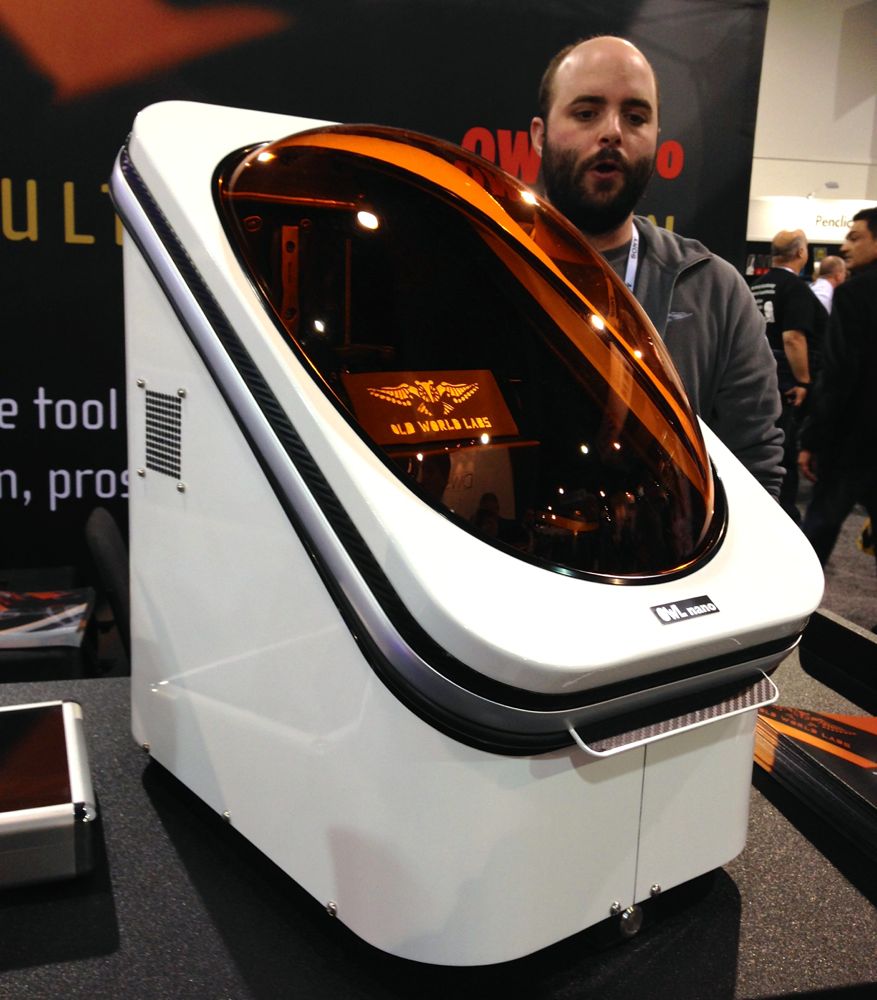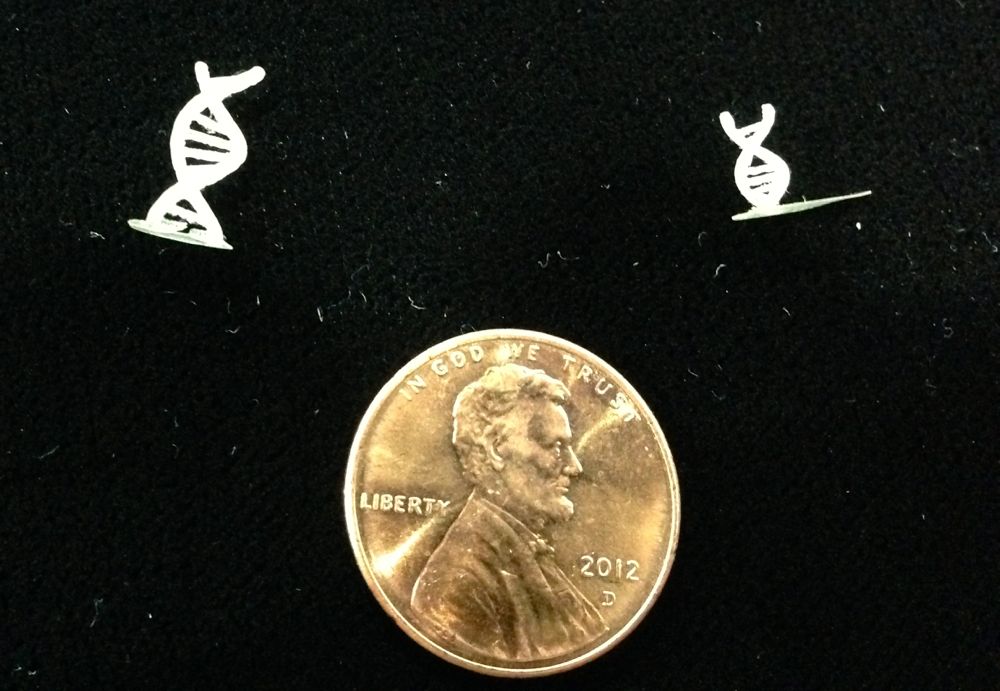
The OWL Nano 3D printer joins the growing ranks of personal 3D printers based on photo-cured resin technology. It’s a curious design, but this 3D printer can deliver incredibly good resolution.
The OWL Nano, named after its originating company, Old World Laboratories, uses a laser to selectively cure layers of UV-curable resin, gradually building up an object.
The main feature of the device seems to be its ultra-high resolution. Other laser-based resin 3D printers use a system of mirrors to direct the laser light toward the resin surface. Not so in the OWL Nano. They’ve entirely eliminated the mirrors so that the single-strand laser can blast the resin directly. Oh, it’s patented, too.
Without mirrors the laser beam can be much more accurate. How accurate? An OWL spokesperson told us they’ve been able to achieve 0.1 microns. That’s MICRONS, not millimeters! That’s 0.0001 millimeters!

We were shown a display of highly detailed objects, among the best we’ve seen. The demonstration set included successively smaller versions of the same “DNA Twist” object. The best resolution could not be seen, however, because the tiniest print had “blown away” and could not be found. That’s small.
The OWL Nano, with its 150 x 150 x 200 mm build volume can be purchased today for USD$4,900.


This seems to be the same thing mUVe 3D has been doing for over a year. Not sure how they can patent this. Furthermore they are using open-source firmware and hardware with their proprietary system which violates the rules of creative commons licensing.
So in effect it seems like they are stealing open source tech to further their proprietary tech. That's not a very nice thing to do. Thousands of people have contributed much time and effort for free. Any derivation of those systems need to be kept free as well.
So lets hope that this patent doesn't mean anything.
Not sure how this hasn't caught anyone's attention yet…..
This seems to be the same thing mUVe 3D has been doing for over a year. Not sure how they can patent this. Furthermore they are using open-source firmware and hardware with their proprietary system which violates the rules of creative commons licensing.
So in effect it seems like they are stealing open source tech to further their proprietary tech. That's not a very nice thing to do. Thousands of people have contributed much time and effort for free. Any derivation of those systems need to be kept free as well.
So lets hope that this patent doesn't mean anything.
Not sure how this hasn't caught anyone's attention yet…..